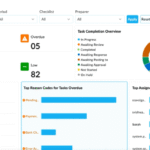Transforming Video Production with Versatility
Pan, Tilt, and Zoom (PTZ) cameras have revolutionized modern video production by providing unprecedented flexibility and efficiency. From television studios to live event arenas, these innovative cameras are reshaping how professionals capture video, making them indispensable tools in the industry.
Key Benefits of PTZ Cameras in Production
Dynamic Shot Composition
PTZ cameras offer a level of dynamism that traditional static cameras cannot match:
- Multiple Angles from a Single Unit: A single PTZ camera can replace multiple fixed cameras, capturing varied angles without the need for physical repositioning.
- Remote Operation: Operators can control these cameras from a distance, adjusting the pan, tilt, and zoom via a console, which is crucial during live events or in sensitive environments.
- Precision and Speed: With automated settings and presets, PTZ cameras quickly move between predefined positions, ensuring high-quality shots and transitions.
Enhanced Production Quality
The advanced features of PTZ cameras contribute significantly to improving the overall production quality:
- High Resolution and Clear Imagery: Modern PTZ cameras offer up to 4K resolution, providing crystal-clear images that are essential for today’s high-definition video requirements.
- Smooth Motion: The mechanical design allows for smooth and quiet movements, which is vital during live broadcasts or when recording in quiet settings.
- Adaptability to Lighting Conditions: Equipped with features like Wide Dynamic Range (WDR) and low-light capabilities, PTZ cameras ensure optimal performance across various lighting scenarios.
Streamlining Operations with PTZ Cameras
Implementing PTZ cameras simplifies production workflows and reduces operational overheads:
- Reduced Manpower Needs: With the ability to control multiple cameras from a single location, fewer personnel are needed on-site, which can significantly cut down production costs.
- Flexible Installation Options: PTZ cameras are compact and can be mounted in numerous positions, offering greater flexibility in terms of set design and space utilization.
- Integration with Production Systems: These cameras seamlessly integrate with existing video production infrastructures, including video switchers and broadcast control systems, facilitating a cohesive workflow.
Advanced Connectivity and Control
Modern PTZ cameras are equipped with network connectivity that enables remote management and control via IP networks. This capability allows for:
- Centralized Control Rooms: Production teams can manage multiple cameras across different locations from a single control room, enhancing coordination and response times.
- Live Streaming: Direct integration with streaming platforms makes PTZ cameras ideal for live internet broadcasts, expanding the reach of events globally.
Real-World Applications
PTZ cameras are not just limited to studio settings; their versatility extends to various production environments:
- Live Sports: They capture fast-paced action from multiple angles without disturbing the audience or athletes.
- Concerts and Events: PTZ cameras provide comprehensive coverage of large venues, ensuring that no key moments are missed.
- Corporate and Educational Settings: They are ideal for recording lectures and presentations, allowing for dynamic interactions and audience engagement.
Conclusion
The adoption of a ptz camera is transforming the landscape of video production, making them essential tools for anyone looking to produce high-quality, dynamic video content. Their ability to offer versatile shooting options, coupled with ease of use and integration capabilities, positions PTZ cameras as a cornerstone of modern video production strategies. As technology continues to evolve, the potential for PTZ cameras in enhancing video production is bound to expand, solidifying their role in the industry for years to come.














